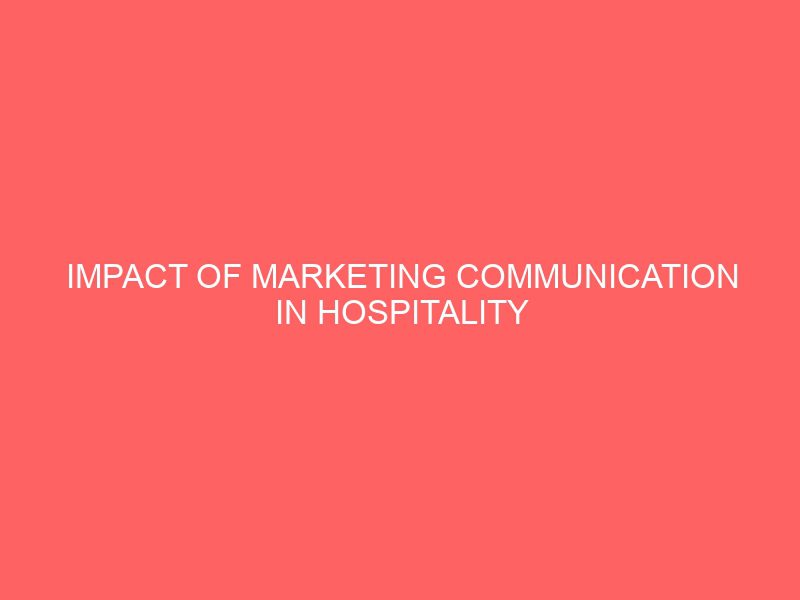Description
CHAPTER ONE
INTRODUCTION
Marketing communications forms a key aspect of the delivery of hospitality services. This sector is heavily dependent on marketing because of the industries special characteristics as services. However, marketing communications is a great deal more than simply about advertising. Getting the right messages to the right people is perhaps one of the most important factors in determining the success of this sector. Indeed marketing communications forms its own subfield of study within the discipline of marketing. And yet there are few textbooks that focus specifically on marketing communications for services, and none of them that look in detail into the communications issues, theories and strategies facing the contemporary tourism and hospitality sector. This is despite the fact that this sector is an experiential services sector which relies so heavily on representations. Representations can be described as impressions, images and depictions about the experiences or about what might be expected from service providers. Although there has been a great deal of academic attention given to the various dimensions of marketing in tourism and hospitality services within the business and management literature, and within sociology on the semiotics of representations of tourist brochures, there has been remarkably little attention given to the broad dimensions of marketing communications, the concepts, strategies, issues and challenges underpinning this important function in a dynamic service sector environment. This book aims to at least partially address this omission. It is important, therefore, that the book begins by attempting to define and limit its scope given the broad nature of the topic and the wide variety of concepts that fall within the remit of marketing communications.
1.2.BACKGROUND OF THE STUDY:
Lashley 2000 argues that hospitality in the historical sense concerns a duty of charitableness, offering protection shelter and succour food and drink to strangers 2000: p. 6. This is in recognition of the fact that hospitality studies have in the past emphasised the commercial orientation, hospitality management, over the more intuitive and humanistic nature of hospitality in the social domain. Conventional definitions of hospitality focus on the provision of domestic labour and services for commercial gain. These services include food, drink and lodging which are offered for sale. Obviously, hospitality services are much more than simply about selling food and drink or providing people with a roof over their head for a night. It is clear that commercial hospitality organisations draw on images and a rhetoric of hospitality which connects more deeply with those historical and socio-anthropological meanings of hospitableness which holds importance for marketing communications. There is an enormous variation in the range of prices for which these services can be charged and so the features of the products and services, and the quality of the service must be very carefully defined and communicated to the selected audiences. It is evident that hospitality services are intrinsic to the tourism industry, and although the hospitality industry serves a much wider range of clients needs than passing strangers and some would even argue that hospitality services form a vital and vibrant part of any community, there are sufficient synergies that link tourism and hospitality together in terms of the issues, challenges and contexts that conjoin them in relation to marketing communications. The hospitality industry can be divided into components which deal in purely the provision of accommodation such as guest houses, hostels and backpackers, youth hostels and camping and caravan sites. Those that offer the full range of services, such as hotels, provide bar, restaurant, conference and meeting rooms, leisure, health, beauty and spa treatments as well as accommodation. A further distinction arises taking into account only those that offer food and beverage, such as restaurants, pubs, and bars and inns. A distinct but complementary sector arises out of the meetings, incentives, conference and events MICE markets which provide hospitality services and are often attached to hotels but are regarded as somewhat separate to conventional notions of hospitality. The sector can also be differentiated by an orientation to particular markets or consumers. Some sections of the trade focus solely on local markets, whereas others cater solely to tourists in the case of the latter, this is mainly in the context of tourist resorts where there is little indigenous population and development is linked explicitly to the tourist trade. Thus again there is a huge variety in the size, scope, ownership structure and orientation to marketing in the hospitality industry making the challenge of understanding the usefulness and application of marketing communications complex and worthy of a specific focus of attention. The hospitality industry is also characterized as a lifestyle consumer activity. Although its services are essential needs, the basics of life food, drink and shelter they are delivered as a consumer experience, and in recent years, there have been trends which reveal the life stylisation of hospitality, particularly used as a reward for hard work in advanced consumer economies. Therefore, in a similar way to tourism, hospitality has become an experiential consumer good, which explicitly aims to appeal to consumers emotions.








Reviews
There are no reviews yet.